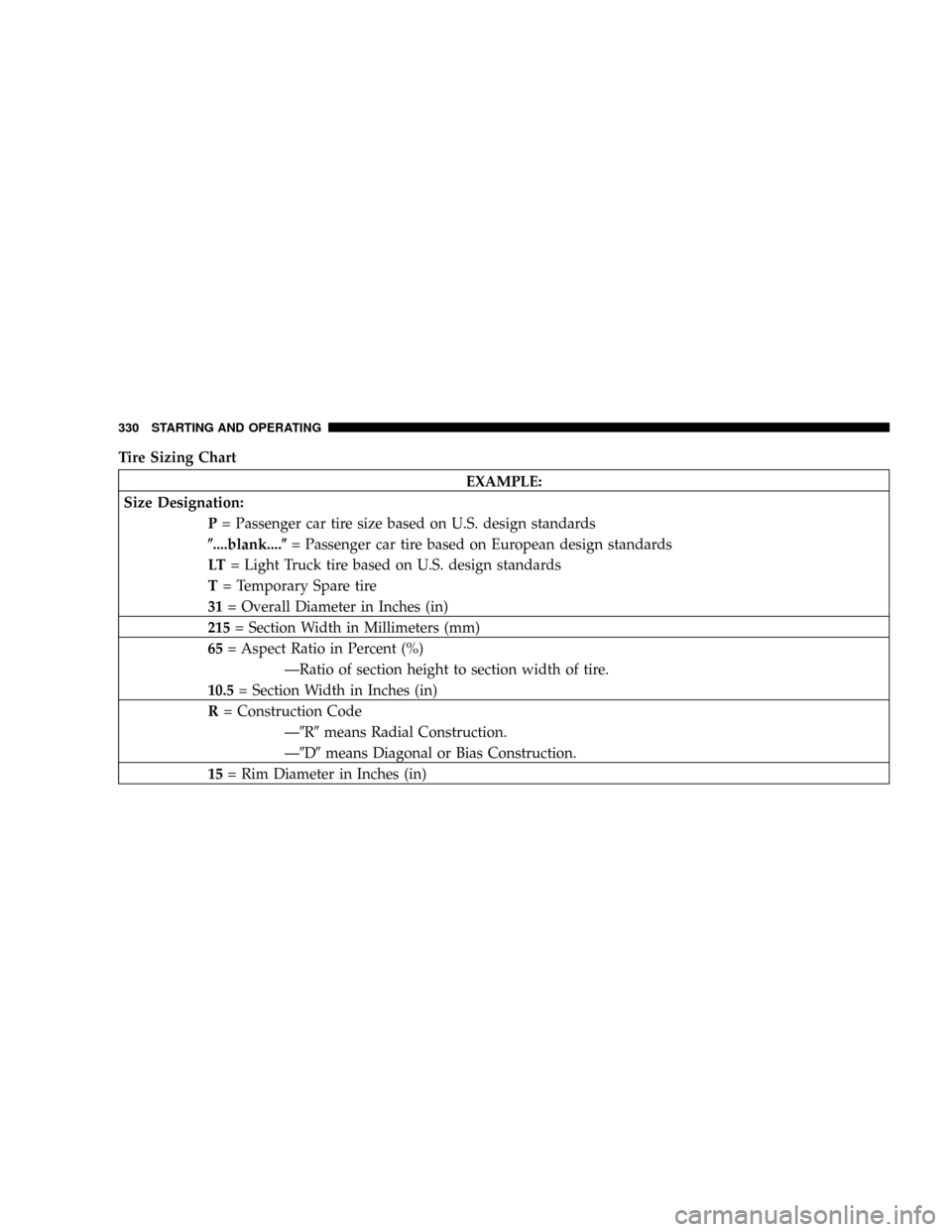height JEEP LIBERTY 2008 KK / 2.G Owners Manual
[x] Cancel search | Manufacturer: JEEP, Model Year: 2008, Model line: LIBERTY, Model: JEEP LIBERTY 2008 KK / 2.GPages: 493
Page 73 of 493

Here are some tips on getting the most out of your child
restraint:
²Before buying any restraint system, make sure that it
has a label certifying that it meets all applicable Safety
Standards. The manufacturer also recommends that
you try a child restraint in the vehicle seats where you
will use it before you buy it.
²The restraint must be appropriate for your child's
weight and height. Check the label on the restraint for
weight and height limits.
²Carefully follow the instructions that come with the
restraint. If you install the restraint improperly, it may
not work when you need it.
²Buckle the child into the restraint exactly as the
manufacturer's instructions tell you.
²When your child restraint is not in use, secure it in the
vehicle with the seat belt or remove it from the vehicle.Do not leave it loose in the vehicle. In a sudden stop or
collision, it could strike the occupants or seat backs
and cause serious personal injury.
LATCH Ð Child Seat Anchorage System (Lower
Anchors and Tether for CHildren)
Your vehicle's rear seat is equipped with the child
restraint anchorage system called LATCH. The LATCH
system provides for the installation of the child restraint
without using the vehicle's seat belts, instead securing
the child restraint using lower anchorages and upper
tether straps from the child restraint to the vehicle
structure.
LATCH-compatible child restraint systems are now avail-
able. However, because the lower anchorages are to be
introduced over a period of years, child restraint systems
having attachments for those anchorages will continue to
have features for installation using the vehicle's seat
belts. Child restraints having tether straps and hooks for
THINGS TO KNOW BEFORE STARTING YOUR VEHICLE 73
2
Page 221 of 493

RADIO GENERAL INFORMATION
Radio Broadcast Signals
Your new radio will provide excellent reception under
most operating conditions. Like any system, however, car
radios have performance limitations, due to mobile op-
eration and natural phenomena, which might lead you to
believe your sound system is malfunctioning. To help
you understand and save you concern about these ªap-
parentº malfunctions, you must understand a point or
two about the transmission and reception of radio sig-
nals.
Two Types of Signals
There are two basic types of radio signals... AM (Ampli-
tude Modulation), in which the transmitted sound causes
the amplitude, or height, of the radio waves to vary... and
FM (Frequency Modulation), in which the frequency of
the wave is varied to carry the sound.
Electrical Disturbances
Radio waves may pick up electrical disturbances during
transmission. They mainly affect the wave amplitude,
and thus remain a part of the AM reception. They
interfere very little with the frequency variations that
carry the FM signal.
AM Reception
AM sound is based on wave amplitude, so AM reception
can be disrupted by such things as lightning, power lines
and neon signs.
FM Reception
Because FM transmission is based on frequency varia-
tions, interference that consists of amplitude variations
can be filtered out, leaving the reception relatively clear,
which is the major feature of FM radio.
NOTE:For vehicles not equipped with the Electronic
Vehicle Information Center (EVIC), the radio and steering
wheel radio controls (if equipped) will remain active for
INSTRUMENT PANEL AND CONTROLS 221
4
Page 330 of 493

Tire Sizing Chart
EXAMPLE:
Size Designation:
P= Passenger car tire size based on U.S. design standards
(....blank....(= Passenger car tire based on European design standards
LT= Light Truck tire based on U.S. design standards
T= Temporary Spare tire
31= Overall Diameter in Inches (in)
215= Section Width in Millimeters (mm)
65= Aspect Ratio in Percent (%)
ÐRatio of section height to section width of tire.
10.5= Section Width in Inches (in)
R= Construction Code
Ð9R9means Radial Construction.
Ð9D9means Diagonal or Bias Construction.
15= Rim Diameter in Inches (in)
330 STARTING AND OPERATING
Page 365 of 493

Gross Combination Weight Rating (GCWR)
The Gross Combination Weight Rating (GCWR) is the
total permissible weight of your vehicle and trailer when
weighed in combination. (Note that GCWR ratings in-
clude a 150 lbs (68 kg) allowance for the presence of a
driver).
Gross Axle Weight Rating (GAWR)
The Gross Axle Weight Rating (GAWR) is the maximum
capacity of the front and rear axles. Distribute the load
over the front and rear axles evenly. Make sure that you
do not exceed either front or rear GAWR.
WARNING!
It is important that you do not exceed the maximum
front or rear GAWR. A dangerous driving condition
can result if either rating is exceeded. You could lose
control of the vehicle and have an accident.
Tongue Weight (TW)
Tongue weight (TW) is the downward force exerted on
the hitch ball by the trailer. In most cases, it should not be
less than 10% or more than 15% of the trailer load. You
must consider this as part of the load on your vehicle.
Frontal Area
Frontal area is the maximum height and maximum width
of the front of a trailer.
Trailer Sway Control Ð Electronic
Refer to ªTSC (Trailer Sway Control)º under ªElectronic
Brake Control Systemº in this section for information on
this system.
Trailer Sway Control Ð Mechanical
The trailer sway control is a telescoping link that can be
installed between the hitch receiver and the trailer tongue
that typically provides adjustable friction associated with
the telescoping motion to dampen any unwanted trailer
swaying motions while traveling.
STARTING AND OPERATING 365
5
Page 487 of 493

Reminder............................ 202
Shoulder Belt Anchorage.................. 46
Untwisting Procedure.................... 47
Seats................................. 118
Adjustment.......................... 118
Cleaning............................ 432
Easy Entry........................... 129
Head Restraints....................... 122
Heated............................. 123
Height Adjustment..................... 121
Lumbar Support....................... 120
Memory............................. 127
Power.............................. 121
Rear Folding......................... 124
Reclining............................ 119
Seatback Release....................... 124
Tilting.............................. 121
Security Alarm (Theft Alarm).............18,204
Selection of Coolant (Antifreeze)..........417,448Selection of Oil......................... 404
Selec-Trac Operation...................... 298
Sentry Key (Immobilizer)................... 14
Sentry Key Programming................... 16
Sentry Key Replacement................... 16
Service Assistance....................... 460
Service Contract......................... 462
Service Engine Soon Light (Malfunction
Indicator)............................. 193
Service Manuals........................ 464
Setting the Clock..................224,239,243
Settings, Personal........................ 216
Shift Lock Manual Override................ 281
Shift Speeds, Manual Transmission........... 291
Shifting............................... 281
Automatic Transmission...............281,283
Manual Transmission................... 288
Transfer Case.................292,294,298,300
Shoulder Belts........................... 42
INDEX 487
10